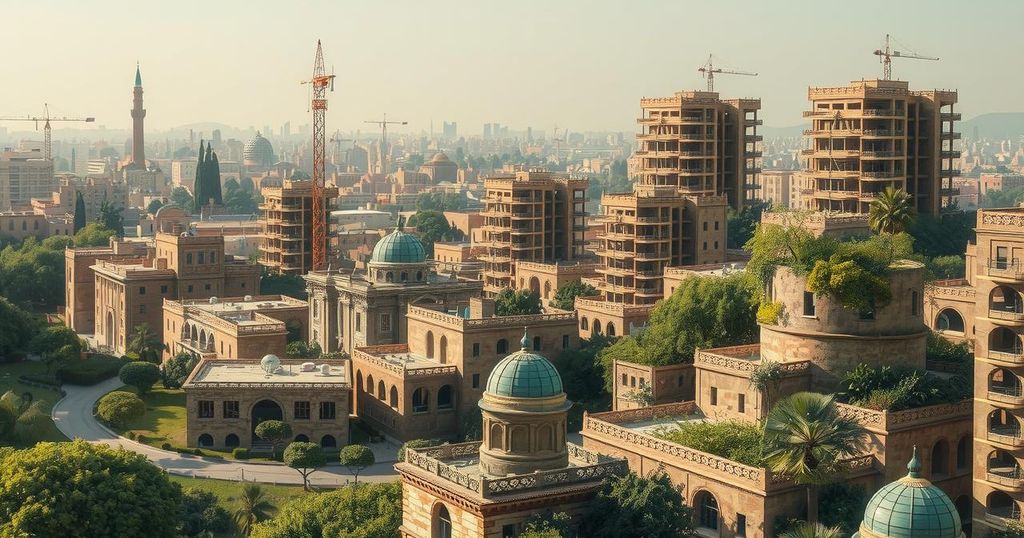Egypt unveiled a $53 billion plan for Gaza’s reconstruction without mentioning Hamas. The plan proposes a six-month technocratic administration followed by re-engagement of the Palestinian Authority. Despite concerns over sidelining Hamas, experts affirm its essential role for successful governance in Gaza. The plan emphasizes addressing armed group activities through a political resolution linked to the Israeli occupation, while the legitimacy of the PA remains a critical issue.
Egypt has recently released a comprehensive plan detailing the future of Gaza, which was presented during an Arab League summit in Cairo. The plan allocates a significant budget of $53 billion over a five-year period for the reconstruction of Gaza, heavily impacted by 15 months of conflict with Israel. Importantly, the plan outlines a governance vision post-conflict without a direct reference to Hamas, the party currently controlling Gaza.
The proposed governance structure for Gaza suggests an initial six-month administration by a non-partisan technocratic committee, followed by a complete re-engagement of the Palestinian Authority (PA) in the region. Despite the absence of direct mentions, Hamas has exhibited a positive response towards the plan, signaling a willingness to negotiate their role within future governance.
Prominent analysts acknowledge that although Hamas is not formally included in the governance framework, its agreement remains essential for any effective administration in Gaza. Expert Qossay Hamed observed, “Nobody will rule Gaza without Hamas’ agreement,” highlighting the necessity of Hamas in the governance narrative despite their current non-involvement.
As the plan anticipates a future governed by the PA, it recognizes that Hamas’s established bureaucratic structures within Gaza will not disappear immediately. Discussions have indicated that while Hamas may lessen its operational management within the territory, its military presence is likely to remain intact.
The Egyptian proposal addresses the challenge posed by various armed groups in Gaza, advocating for a political resolution to ensure the eventual cessation of armed resistance. Effective resolutions to the Israeli occupation are vital; as Annelle Sheline explained, the ongoing occupation serves as a root cause for continued armed activities carried out by groups like Hamas.
Furthermore, the plan incorporates provisions for training Palestinian police forces and proposing an international presence, implying the necessity of a varied coalition to solidify peace in post-war Gaza. However, experts like Hamed caution that any external forces would need to collaborate closely with Hamas to establish effective governance.
The PA’s return to Gaza faces challenges due to its waning legitimacy under President Mahmoud Abbas. Discussions regarding potential leadership changes, including ideas about introducing figures like Mohammed Dahlan and Marwan Barghouti, who may unify various factions, underscore the complex political landscape.
Amidst these deliberations, the necessity for a democratic electoral process is critical for re-establishing public trust in the PA. As revealed by Sheline, the historical corruption and lack of accountability within the PA have diminished its formerly upheld legitimacy, paving the way for potential new leadership dynamics.
In summary, Egypt’s post-war Gaza plan is multifaceted and aims to restructure governance while addressing the need for reconstruction and political stability in Gaza. Although it does not explicitly include Hamas, their agreement is crucial for any effective future administration. Additionally, the complexities regarding the PA’s legitimacy and potential leadership changes play a significant role in shaping the political landscape. Ultimately, the success of this plan will hinge upon the collaboration of various Palestinian factions and the international community to foster sustainable peace and governance in Gaza.
Original Source: www.middleeasteye.net




